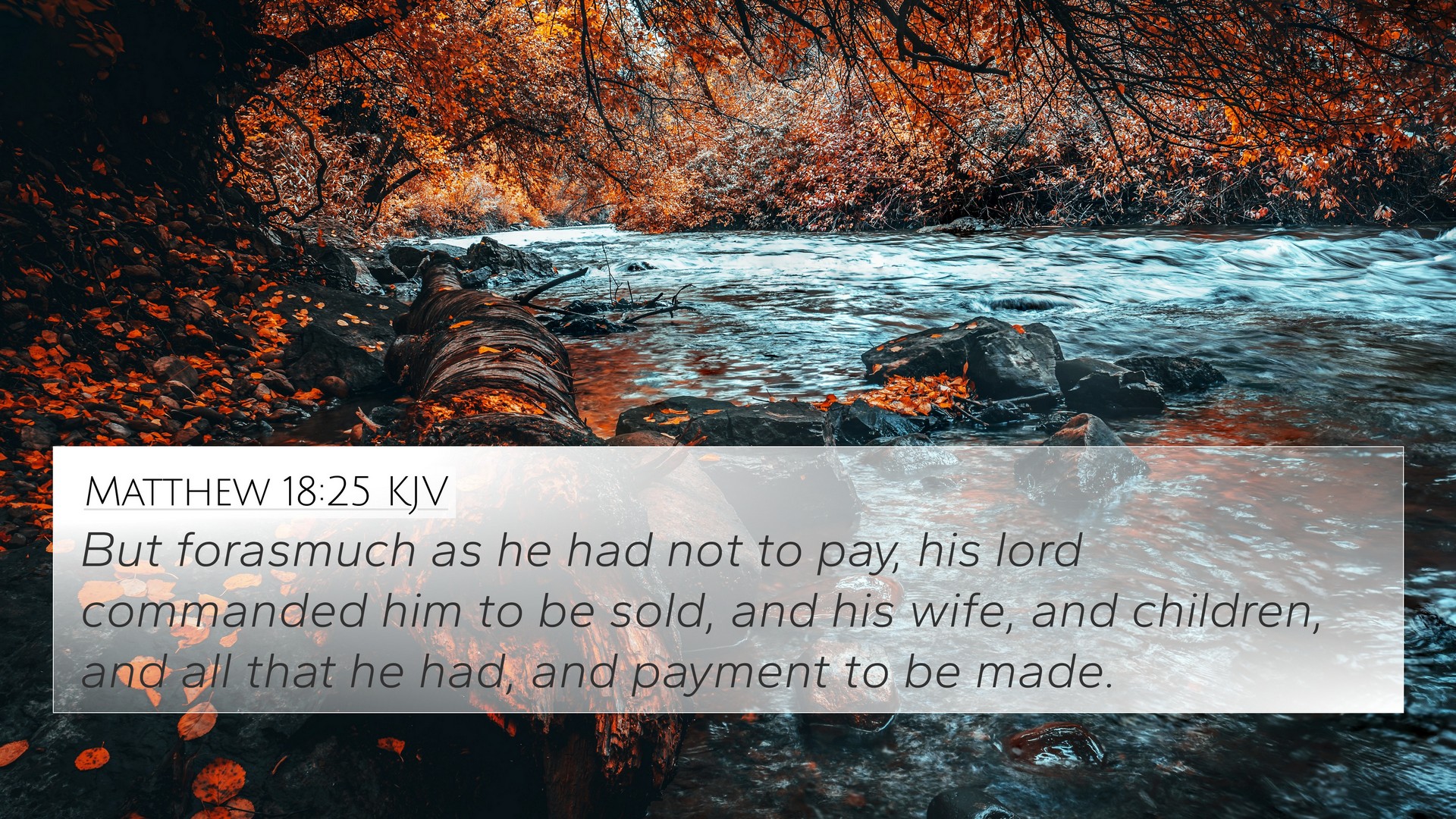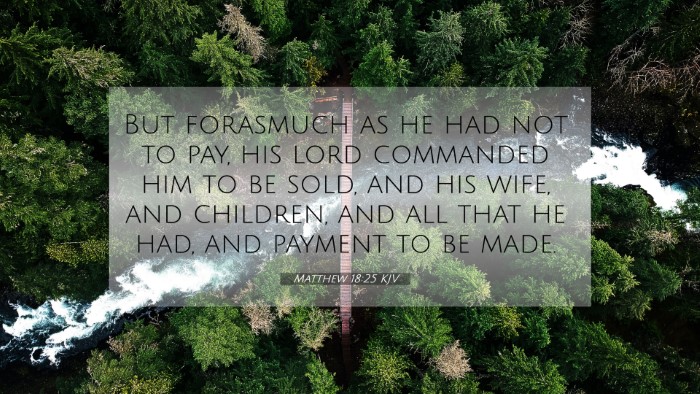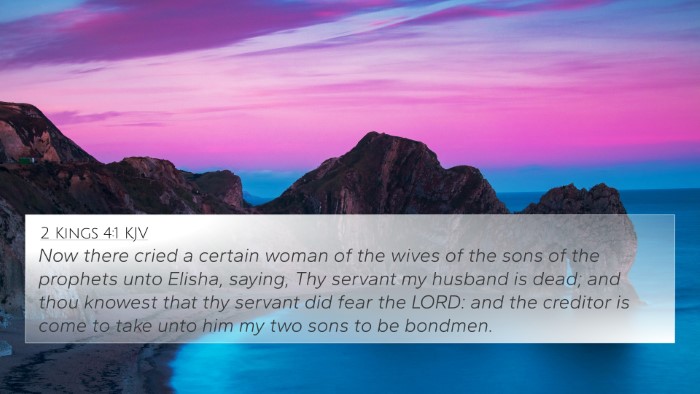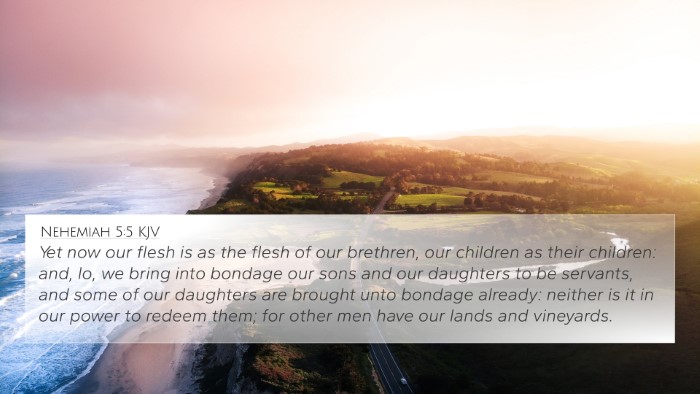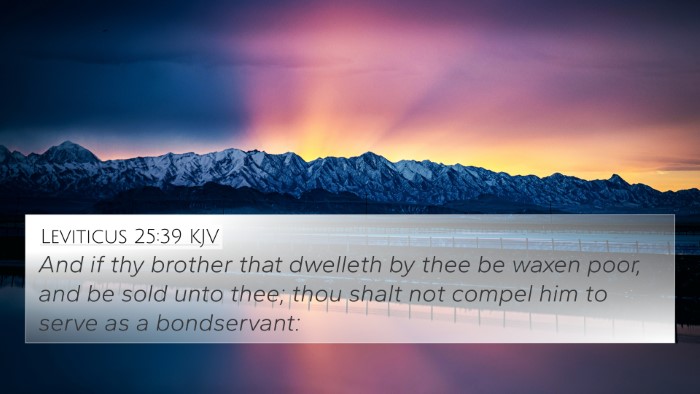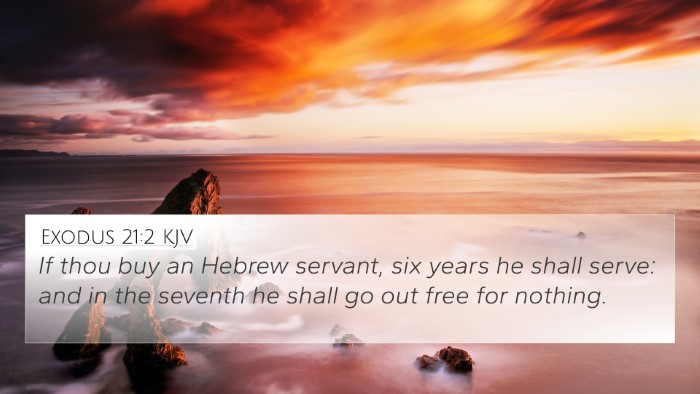Understanding Matthew 18:25
Verse: Matthew 18:25 - "But as he was not able to pay, his master commanded that he be sold, with his wife and children and all that he had, and payment to be made."
Summary of Meaning
This verse arises from a parable that Jesus tells regarding forgiveness and the debt owed to God, illustrating profound spiritual truths. The master represents God's grace, while the servant symbolizes humanity facing insurmountable debt due to sin. The inability to pay signifies mankind's inability to redeem itself without divine assistance.
Contextual Analysis
In this narrative, the servant's failure to settle his debt conveys the severe consequences of sin and the need for mercy. The master's decree to sell the servant and his family highlights the grave reality of sin's debt, while simultaneously setting up the ensuing themes of mercy and forgiveness that Jesus aims to teach.
Commentary Insights
-
Matthew Henry: Henry emphasizes the grace of the master and the severity of the servant's case, contrasting divine justice with mercy. This act of selling the servant serves as a reminder of the eternal consequences of refusing to seek forgiveness.
-
Albert Barnes: Barnes interprets this passage as highlighting the impossibility of repaying a debt to God, thereby illustrating human dependence on divine mercy. He underscores that this narrative serves to teach about the importance of forgiving others as we have received forgiveness.
-
Adam Clarke: Clarke provides a practical application of the parable, noting that the master represents God, and the servant refers to mankind. He focuses on the dire state of human sinfulness and the urgent need for absolution through Christ.
Bible Cross-References
This verse connects with several key themes and other scriptures through its central messages of debt and forgiveness:
- Matthew 6:12: “And forgive us our debts, as we forgive our debtors.” - This highlights the reciprocal nature of forgiveness.
- Luke 7:41-43: The parable of the two debtors, illustrating that he who is forgiven much, loves much.
- Romans 6:23: "For the wages of sin is death; but the gift of God is eternal life through Jesus Christ our Lord." - The concept of divine payment relates directly to wages and debts.
- Colossians 2:14: "Blotting out the handwriting of ordinances that was against us, which was contrary to us, and took it out of the way, nailing it to his cross." - Jesus’ sacrifice covers our debts.
- Ephesians 4:32: “And be ye kind one to another, tenderhearted, forgiving one another, even as God for Christ's sake hath forgiven you.” - Teaches the necessity of our forgiveness towards others.
- Luke 16:11: “If therefore ye have not been faithful in the unrighteous mammon, who will commit to your trust the true riches?” - Reflects on the integrity in handling what is entrusted to us.
- Hebrews 10:30: “For we know him that hath said, Vengeance belongeth unto me, I will recompense, saith the Lord...” - Discusses divine recompense due for sin.
Thematic Connections
This verse is rich with thematic connections that enhance our understanding of the biblical narrative around forgiveness:
- Grace vs. Justice: Demonstrates God's justice in the reality of our debt, balanced with the grace offered through Christ.
- Human Limitations: Highlights the limits of human effort in attaining righteousness without divine intervention.
- Interpersonal Relationships: Instructs on the importance of forgiving others as a reflection of the forgiveness received from God.
- Condemnation vs. Redemption: Illustrates the condemnation due for sin but sets up the contrast for the message of redemption through Jesus.
Conclusion
Matthew 18:25 serves as a crucial reminder of our state in relation to God and the necessity of forgiveness in our lives. By exploring this verse through various commentaries and biblical cross-references, we are equipped with deeper insights into God's nature, the reality of sin, and the importance of grace in our relationships.
How to Use Bible Cross-References
Utilizing a bible cross-reference guide while studying can deeply enhance understanding. Here are some tools and methods:
- Consult a Bible concordance to find related verses and themes.
- Apply the cross-reference Bible study method to identify parallels between different sections of scripture.
- Engage in comprehensive Bible cross-reference materials for deeper analysis of themes.
- Use online tools or print resources to track scriptural cross-referencing.
- Practice identifying thematic connections between Old and New Testament passages.
